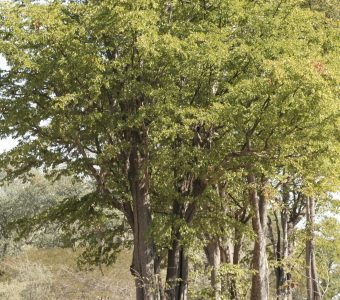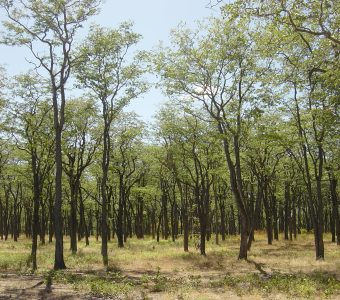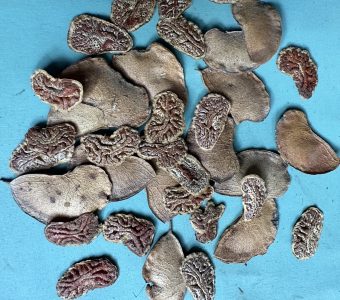


Botanical Name: Colophospermum mopane
Common Name: Mopane, Mupane, Mwane, Chanye, Mpane, Mwaani
Plant Family: Fabaceae (Legume Family) Caesalpinoideae
Growth Form, Habitat and Distribution: Slow growing. A deciduous tree, usually with a single trunk and upward spreading branches and a fairly narrow crown. Occurs mainly on the heavy sodic clays of the main river valleys and their tributaries below 1,300m, sometimes in pure stands of “gallery” forest. Occasionally in other woodland types and on termite mounds.
Size: Height: up to 21m, spread 6 to 10m.
Bark: Grey, becoming dark grey-brown, characteristically vertically fissured. Produces a gum when damaged.
Leaves: Compound, bi-foliate, glossy green with numerous glands producing a turpentine smell when crushed. Leaflets without petiolules resembling butterfly wings (4 to 10cm) with several veins from the base and a vestigial leaflet between them. Petiole 2 to 4cm.
Flowers: Dioecious. Axillary sprays of small, mainly December to March.
Fruit: Golden brown, flat, kidney-shaped pods (3 to 5cm) at the ends of branchlets, ripening the following May to October. The single seed germinates in the pod and has an attractive, convoluted pattern of reddish lines and numerous resin glands.
Uses: The wood is straw-coloured, very heavy and polished well. The leaves, bark and fruit are favoured by many species. Elephants browse results in large areas of stunted mopane woodland. A larval food plant for Emperor moths/edible mopane worm.
